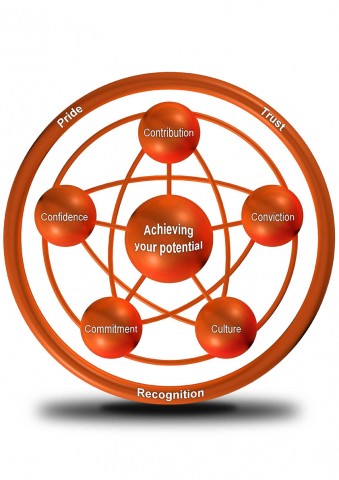 As I am preparing for next week’s “Leveraging the Science of Happiness at Work” presentation to the Rogue Valley Society for Human Resource Management (SHRM), I’m reflecting on a comment a Facebook friend made the other day when I shared results from a Wall Street Journal survey on happiness in the workplace.
As I am preparing for next week’s “Leveraging the Science of Happiness at Work” presentation to the Rogue Valley Society for Human Resource Management (SHRM), I’m reflecting on a comment a Facebook friend made the other day when I shared results from a Wall Street Journal survey on happiness in the workplace.
She wrote, “As a small business-owner, no matter the type of business, my primary concern is to make a living, to pay my staff, my taxes and my vendors. Since 2008 when the recession slammed all of us, it’s been a very, very hard slog. Like many other businesses, we’ve laid off employees and we’ve cut costs to the bone. I’m concerned about survival – of my business and of my family. Frankly, ‘happiness’ on the job is merely a luxury, an afterthought that I cannot afford.”
I expect that many people are feeling the same way. What business owners don’t understand is that happiness at work – defined as “a mindset that enables action to maximize performance and achieve potential” – actually saves them money. In fact, research has proven it can enhance revenue.
Empirical research by iOpeners Institute for People and Performance, involving 9,000 people from around the world, reveals some astonishing findings. Employees who report being happiest at work:
- Stay twice as long in their jobs as their least happy colleagues
- Spend double their time at work focused on what they are paid to do
- Take ten times less sick leave
- Believe they are achieving their potential twice as much
This means greater outcomes and profits for employers.
And the “science of happiness at work” has big benefits for individuals too. If you’re really happy at work, you’ll solve problems faster, be more creative, adapt fastest to change, receive better feedback, get promoted quicker and earn more over the long-term.
So the next time start to feel that happiness at work is a luxury you can’t afford, think again. Give me a holler if you’d like to see how you can be happier at work. I’ll provide a free individual or team happiness assessment to the first person that contacts me.

 I’m presenting tomorrow at the University of New Mexico’s Mentoring Institute Conference on Leveraging the Science of Happiness at Work. Excited! Also doing a poster session and getting my paper published in the proceedings. A copy will soon be on this website.
I’m presenting tomorrow at the University of New Mexico’s Mentoring Institute Conference on Leveraging the Science of Happiness at Work. Excited! Also doing a poster session and getting my paper published in the proceedings. A copy will soon be on this website.  In Happiness at Work: Maximizing your Psychological Capital for Success (2010), author Jessica Pryce-Jones takes her research with more than 3,000 respondents from 79 countries and gets to the heart of what drives happiness and (this is so cool!) found that
In Happiness at Work: Maximizing your Psychological Capital for Success (2010), author Jessica Pryce-Jones takes her research with more than 3,000 respondents from 79 countries and gets to the heart of what drives happiness and (this is so cool!) found that  At the center of the Performance-Happiness Model is believing that you are achieving your potential. This is important because that belief makes you happy, and the statistics around happy versus unhappy employees are staggering.
At the center of the Performance-Happiness Model is believing that you are achieving your potential. This is important because that belief makes you happy, and the statistics around happy versus unhappy employees are staggering.


